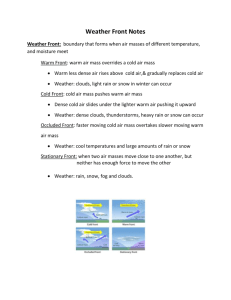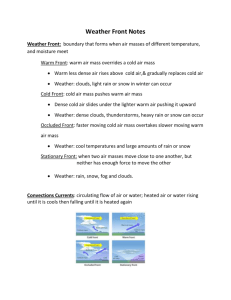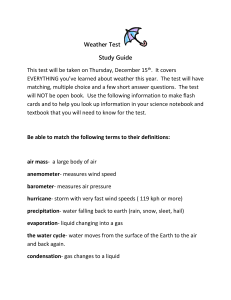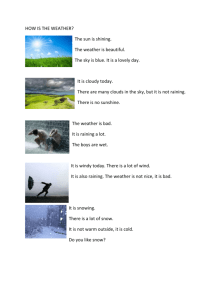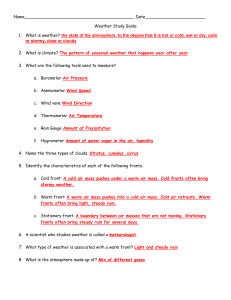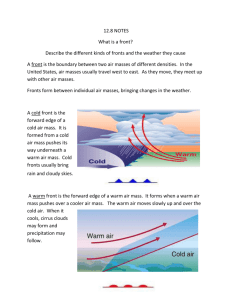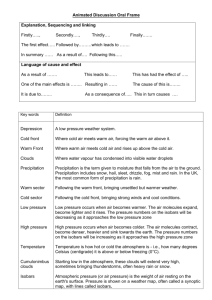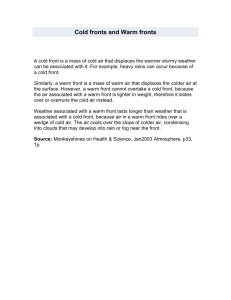Storms Test #2
advertisement
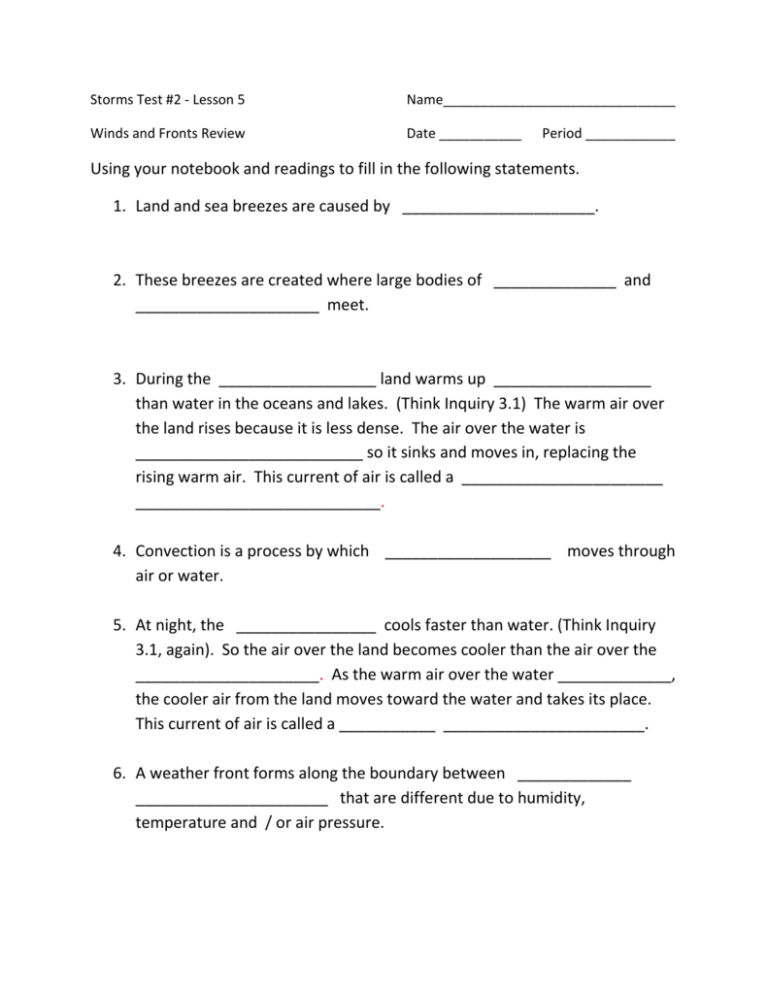
Storms Test #2 - Lesson 5 Name_______________________________ Winds and Fronts Review Date ___________ Period ____________ Using your notebook and readings to fill in the following statements. 1. Land and sea breezes are caused by ______________________. 2. These breezes are created where large bodies of ______________ and _____________________ meet. 3. During the __________________ land warms up __________________ than water in the oceans and lakes. (Think Inquiry 3.1) The warm air over the land rises because it is less dense. The air over the water is __________________________ so it sinks and moves in, replacing the rising warm air. This current of air is called a _______________________ ____________________________. 4. Convection is a process by which ___________________ moves through air or water. 5. At night, the ________________ cools faster than water. (Think Inquiry 3.1, again). So the air over the land becomes cooler than the air over the _____________________. As the warm air over the water _____________, the cooler air from the land moves toward the water and takes its place. This current of air is called a ___________ _______________________. 6. A weather front forms along the boundary between _____________ ______________________ that are different due to humidity, temperature and / or air pressure. 7. Label each of the fronts in the illustrations below. A. _________________ B. C. __________________ D. ___________________ ____________________ 8. Match the letter of the front above with its written description. _____ Neither front is strong enough to move the other. The temperature changes from one side of the front to the other. The weather may include cloudy with rain, snow and fog. _____ Warmer air mass rides over top of the cold air in front of it. The dry air makes scattered clouds and when the air mass is humid it rains. The temperature will get warmer and it may be rain for days. _____ Cold air slides under warm air and pushes it up. The weather could include thunderstorms and tornados as cool dry air moves in. _____ Warm air gets trapped between two cold air masses and pushed up. The weather would be cloudy with rain or snow. The temperature will get colder.


